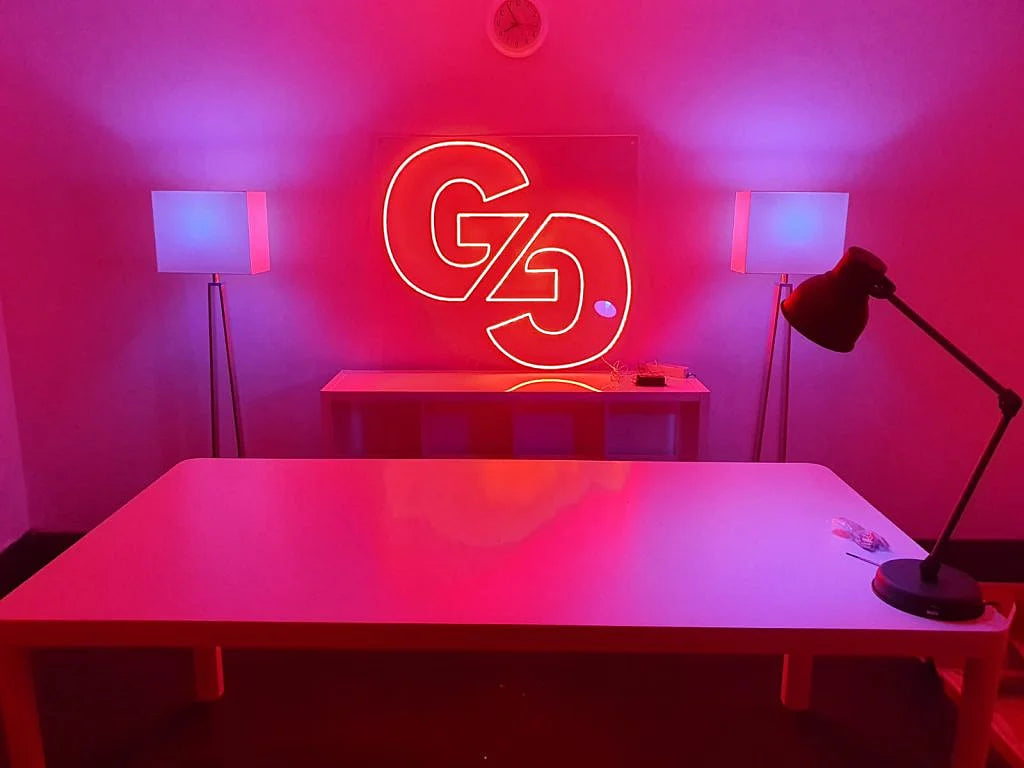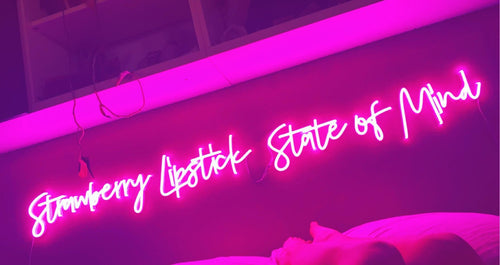Neon signs have a rich history, evolving from simple advertisements to intricate works of art that enhance the aesthetics of spaces. In this blog post, we will explore a central question regarding custom-designed neon signs:
The History of Neon Signs
Before diving into the design considerations, it's essential to understand the background of neon signs. Neon gas was discovered in 1898 by British scientists William Ramsay and Morris Travers. It wasn’t until 1910 that neon lighting became commercially available, thanks to French engineer Georges Claude. The first neon sign was displayed in Paris, quickly capturing the imagination of the public.
Neon signs became particularly popular in the 1920s and 1930s, serving as a vibrant advertising medium for businesses. Their ability to draw attention and create a lively atmosphere made them a staple in urban settings. Over the years, neon signage has transcended its advertising roots, becoming a symbol of art and culture, particularly in cities like Las Vegas and New York.
What are Custom Design Neon Signs?
Custom-designed neon signs are personalized illuminative artworks created based on specific preferences, themes, or messages. Unlike traditional neon signs that often follow a standard design, custom signs allow for a unique expression of creativity. Whether for business branding, home décor, or artistic expression, custom neon signs can be tailored to fit any style or purpose.
Key Considerations in Designing Custom Neon Signs

1. Purpose and Message
The first step in designing a custom design neon sign is identifying its purpose. Is it for a business, a personal space, or an event? Understanding the message you want to convey is crucial, as this will guide your design choices. For instance, a business sign should communicate the brand identity clearly, while a home décor piece might focus more on aesthetics or a personal mantra.
2. Color Selection
Color plays a pivotal role in the impact of neon signs. Neon lights are available in a range of vibrant colors, each evoking different emotions. For instance, blue can create a calming effect, while red is often associated with energy and excitement. When choosing colors, consider the psychological effects they may have on viewers, as well as how they align with the overall theme of your space.
3. Font and Typography
The choice of font is another critical consideration. The style of lettering can significantly affect how your message is perceived. Bold, modern fonts might convey a sense of innovation, while script fonts can add a touch of elegance. It’s essential to choose a typeface that complements the sign's purpose and resonates with the intended audience.
4. Size and Placement
The size of your neon sign should be proportional to the space where it will be displayed. A large sign can become a focal point, drawing attention from afar, while smaller signs might be better suited for intimate settings. Additionally, consider the placement of the sign. High-visibility locations, such as shop windows or entryways, can maximize its impact.
5. Shape and Design Elements
The shape of your custom design neon signs can greatly influence its overall appeal. Custom signs can take various forms, from simple rectangles to intricate designs resembling objects, animals, or logos. Incorporating design elements such as borders or background panels can enhance the visual interest of the sign.
6. Materials and Technology
While traditional neon signs use glass tubes filled with gas, modern custom neon signs often utilize LED technology. LED neon signs are more energy-efficient and durable, making them a popular choice for custom designs. When selecting materials, consider the longevity and maintenance requirements of your sign, as well as your budget.
7. Legality and Regulations
Before finalizing your design, it's essential to check local regulations regarding signage. Some areas have restrictions on the size, brightness, or type of signs allowed. Ensuring compliance with these regulations will prevent potential issues down the road.
Creative Possibilities for Custom Neon Signs
Custom neon signs offer endless creative possibilities. Here are some unique ideas to inspire your design:
-
Personalized Quotes: Transform meaningful quotes or phrases into stunning neon artworks that reflect your personality or values.
-
Logo Designs: Businesses can enhance their branding by incorporating their logos into neon signs, creating a striking visual identity.
-
Artwork Replicas: Artists can turn their work into neon signs, offering a new medium for their creations.
-
Event Decorations: Custom design neon signs can serve as eye-catching decorations for events, such as weddings, parties, or corporate functions.
-
Themed Spaces: Create a cohesive theme for restaurants, bars, or cafés by designing neon signs that align with the overall ambiance.
The Future of Custom Neon Signs
As technology advances, the future of custom neon signs looks promising. With the rise of LED technology, neon signs are becoming more accessible and versatile. Designers can experiment with new shapes, colors, and features, such as programmable LED signs that can change messages or colors based on different contexts.
Moreover, the growing trend of personalized home décor means that more individuals are looking to incorporate custom neon signs into their living spaces. From home bars to gaming rooms, the demand for unique, eye-catching neon signage continues to rise.
Conclusion
Custom-designed neon signs represent a fusion of art and technology, offering a unique means of expression for individuals and businesses alike. By considering the purpose, colors, typography, size, and design elements, one can create a stunning neon sign that illuminates any space with creativity.




